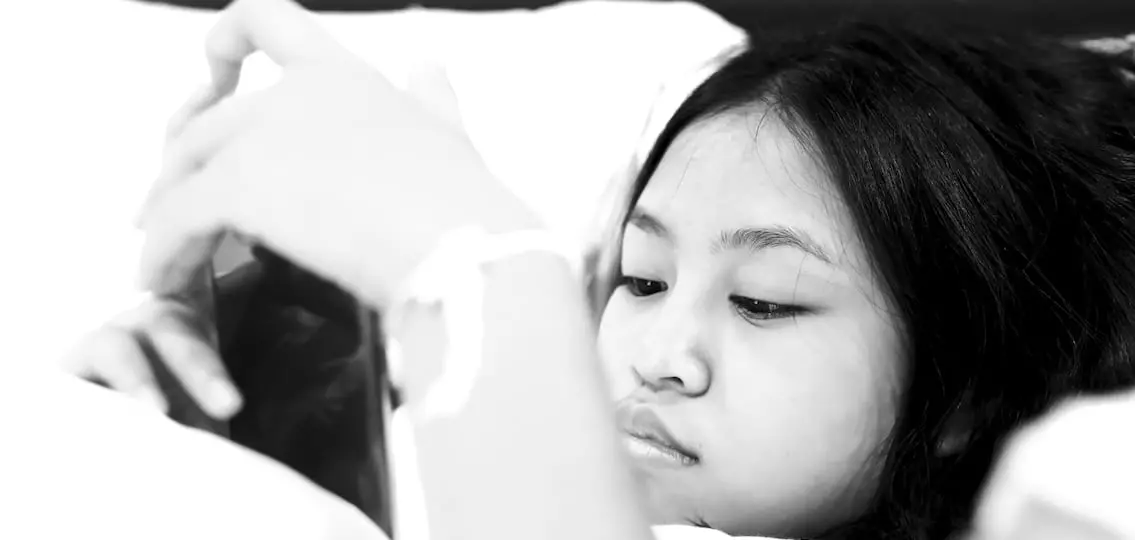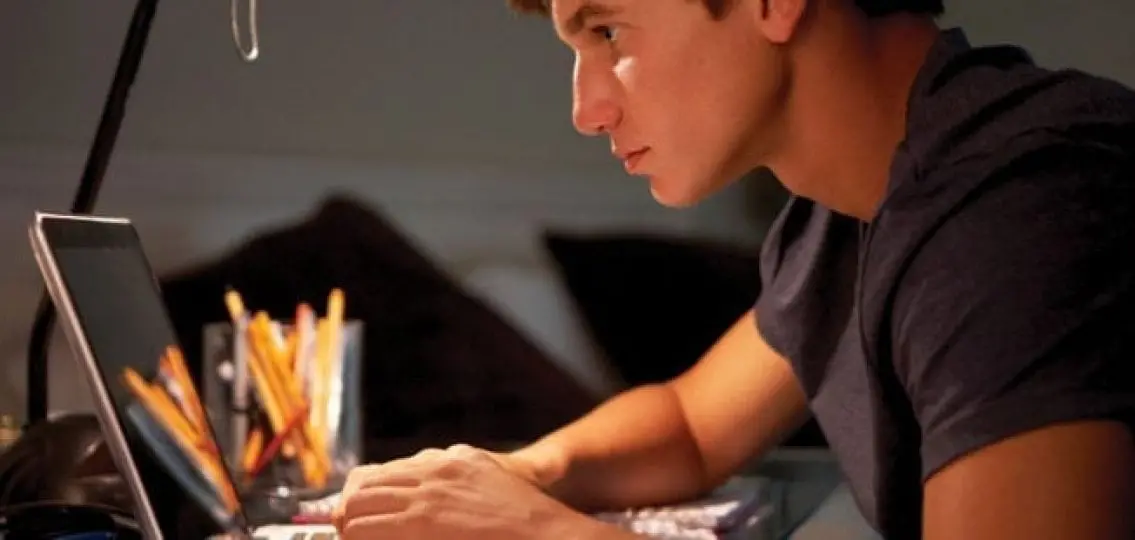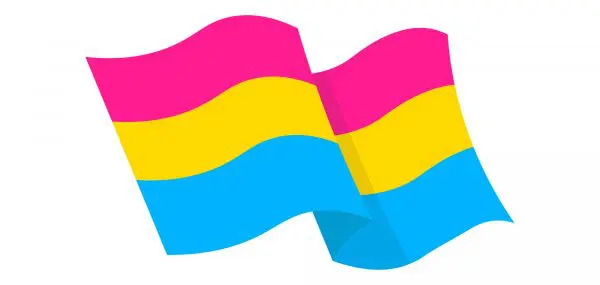These days, teenagers can access explicit pornography with just a click or two on any internet-enabled device, including a phone. Twenty or 30 years ago, a tattered Playboy or Penthouse or a copy of The Joy of Sex was about as eye-opening as it got. Your Teen asked psychologist Dr. Wes Crenshaw to help us understand what’s available, the dangers of pornography, and why internet porn is bad for teens.

Why Is Watching Porn Bad For Teenagers?
Q: What’s changed in the past 20 or 30 years?
Crenshaw: Today’s explicit online content (EOC) is different in three critical ways that make it particularly impactful to society and especially teens:
- Today for the average teen getting pornography is as easy as googling.
- There’s an unbelievable amount of explicit content available online for free. The only cost is the computer or smartphone and most teenagers own those already.
- What’s depicted in this newer wave of online pornography is by any standard extreme and graphic.
Q: So any curious adolescent can stumble onto extremely explicit material?
Crenshaw: That’s correct. And it doesn’t even require you to actually go in search of pornographic content. Anything connected to sex, even legitimate educational content, can send one down the online pornography path.
Q: Is porn bad for teens?
Crenshaw: Yes, internet pornography is bad for teens. The dangers of pornography include:
Inaccuracy of Information.
I tell kids and parents that learning about sex from pornography is like learning about the animal kingdom from watching Roadrunner and Wile E. Coyote. Most internet pornography is a cartoon of human sexuality. It’s visually interesting for the camera, but emphasizes the most mechanical and stimulating aspects of sexuality. That’s actually the least important thing when you’re really one-to-one, and NOT what we want to emphasize to kids. EOC provides no context, no storyline, no before and after, and except in rare instances, no relationship between the parties.
Worse, because it markets to the extreme, pornography highlights sexual acts that few teens and not too many adults are able to replicate. At least, they should not be expected to try them outside of a highly functional sexual relationship—which rarely defines the teen dating culture. Yet this kind of replication is increasingly the goal among teens—mostly boys, but they are not without willing female partners.
We call it “adult material” for a reason.
Violence.
There’s an extensive—and by this I mean virtually unlimited—genre of free EOC involving staged sadomasochism. Teens and most certainly, pre-teens are in no psychological or neurological position to discriminate sexual role-play from something that is intended to hurt or humiliate.
Degradation.
Beyond overt violence, there’s an even larger body of material that I would refer to as degrading, even cruel, but not exactly violent. Rather, it’s overtly designed to degrade. Some of the material focuses on women. Other genres show women degrading men, and in the case of gay pornography men degrading men, and women degrading women. Some sites are branded with language about humiliation. That’s their selling point. So there’s no pretense in this material.
Q: What’s the impact of watching porn on the internet? What are the effects of pornography?
Crenshaw: Girls are in competition with the young ultra-fit nude and shaved models in EOC. Also, as I mentioned, these models are doing things on camera that many girls have not considered doing or even imagined possible. And that’s what boys are asking for. I firmly believe that this has in no small part, driven the dating pool toward more sexualized encounters which fall outside of exclusive relationships.
Boys take in volumes of explicit material, which raises their “virtual” sexual experience far beyond previous generations. They might now see thousands of explicit and diverse videos, where as earlier teen boys saw a few hundred softer stills and just a few explicit videos. This increases a boy’s imagination of what is possible and he conveys those desires to his partner, who then feels she has to comply to remain competitive in the dating pool. And to be clear, this is not something I’m inventing. It’s something I discuss with young people ages 15 to 25 quite often.
Q: Has it impacted boys more than girls?
Crenshaw: No. I just think the impact is different. Internet pornography is still bad for teens, whether they are a boy or a girl. Girls have an investment in a solid dating pool. But as a culture, girls lack the confidence now to draw the lines and say, “This is what I expect.” I work with a lot of girls to help them learn to do that, and while I’m pretty successful, it’s often an uphill battle against their own insecurities and those imposed on them by culture. So that’s a real problem for girls as they get older, look for long term relationships and possibly marriage, and find the dating pool filled with twenty-somethings who haven’t really matured to that level yet. There’s more to that than pornography, but I think it’s making an impact—and not a very great one. Which leads us to…
The problem for boys is that pornography enters there lives at an early age and socializes them into what it means to be a sexual person. The cartoon of pornography can indoctrinate boys before they have ready sexual options and so they come to the table, so to speak, full of (bad) information and ready to get started. Moreover, boys don’t have to work hard to look at pornography and they don’t have to work very hard to find ready sexual contact. I’ve come to realize lately that they also don’t have to work very hard to find emotional contact, companionship, or intimacy. Girls are giving that away too, without any expectation of reciprocity. In response, we have a completely asynchronous dating field, with guys in the advantage in a way they’ve never been before.
How much of that is attributable to pornography? It’s hard to say, but as the earliest teacher for boys, it’s not a very good method of socialization.
Q: So how do we talk about all this with our teenagers?
Crenshaw: Today the conversation is what I call “consent based.” Its about how to make the decision to have sex. It assumes something rather obvious—that short of joining a monastery, most kids will eventually have sex. So the issue isn’t about preventing that eventuality, it’s about enhancing it; making it something that is intentional, rather than is all too often the case, something half-hearted or poorly considered.
As a part of this, I do encourage families to explain to kids: (a) it’s not just “no means no” because that’s entirely too low a standard, particularly as alcohol is too often involved. It’s about having a clear and affirmative “yes” and only proceeding when there is no question; (b) Everyone has the right to his or her own consent. So bullying others into have sex, violates free will. Believe me, it happens a lot.
There’s also the issue of reciprocity—who gives and gets in a relationship. The conversation should involve how pornography portrays reciprocity versus how it is expressed in a healthy relationship.
I actually think that if we live in reality and treat kids as if they do have a choice, they will be better equipped to choose wisely and with fully informed consent. That’s just not how things are being handled right now, and if we don’t move in that direction as parents, we lose all influence. That’s especially worrisome when considered alongside the greater influence of pornography in teen lives.
Q: Do you recommend a filter on our devices and home computers?
Crenshaw: Absolutely. As imperfect as content filters are, they are necessary to protect teens from pornography. As parents our job is to set a standard for what we believe is important and the wholesale consumption of sexual content by teenagers is a problem requiring a response. Many parents may filter house computers. A few may even filter tablets. But how many have filtering software on their iPhones or Android devices? These exist both at the data network provider level and within software available for the phones. You just have to get online or call your provider and get them set up.
Parents shouldn’t hand out a smart phone without those filters in place.

Q: Of course, our teenagers can still easily access this stuff at friends’ houses or on some public networks?
Crenshaw: Oh yes they can. So, no parent should kid him or herself. Filtering won’t keep any kid safe from internet pornography. But it will do two important things: a) Reduce the total amount of material he or she consumes over adolescence, thus lowering the “dosage” effect and saving a lot of time and bandwidth; and b) Send a strong message about what you believe is good for teens. That will in turn, create a strong, ongoing discussion of what’s really important—why you set up those filters.




